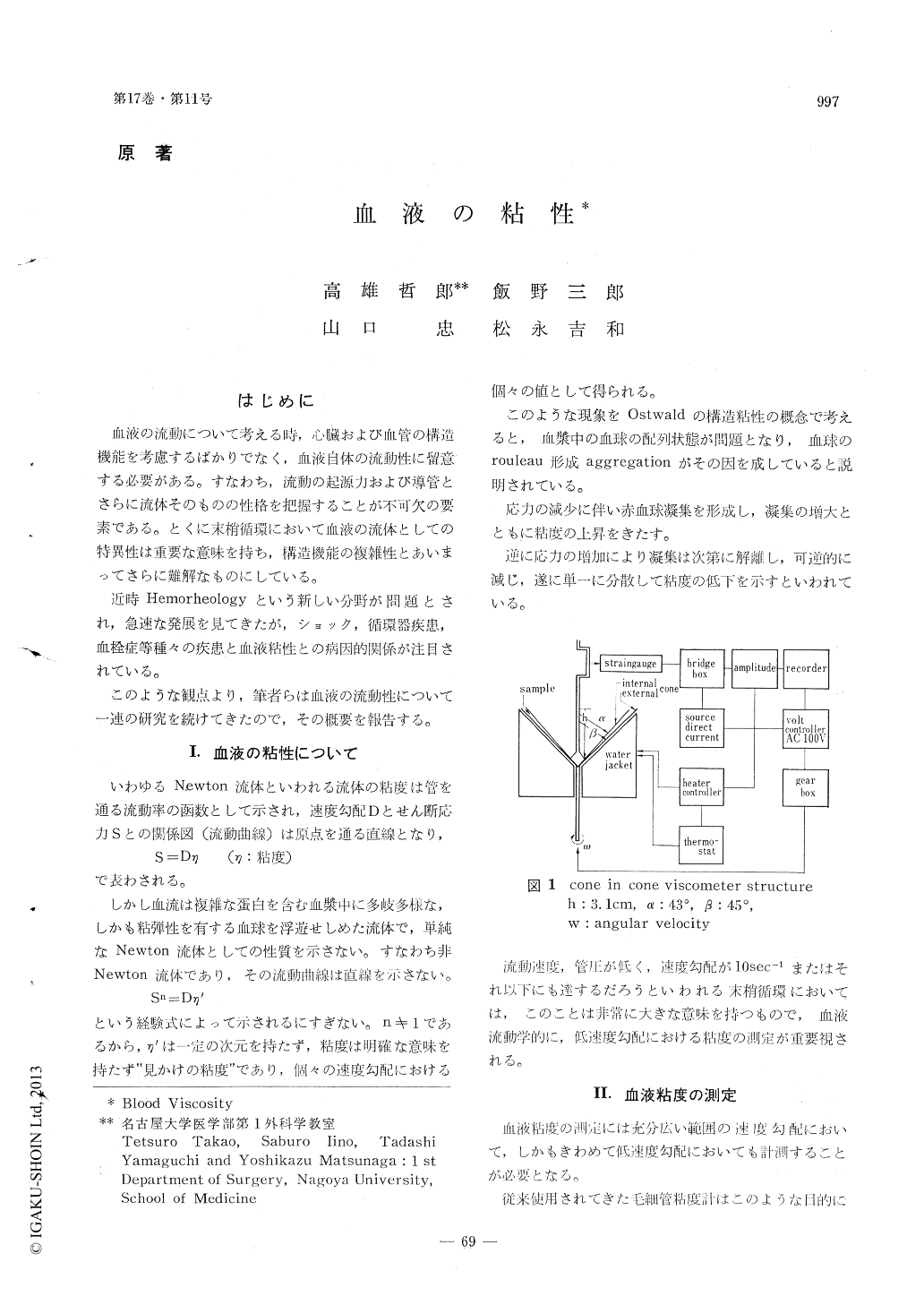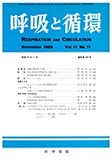Japanese
English
- 有料閲覧
- Abstract 文献概要
- 1ページ目 Look Inside
はじめに
血液の流動について考える時,心臓および血管の構造機能を考慮するばかりでなく,血液自体の流動性に留意する必要がある。すなわち,流動の起源力および導管とさらに流体そのものの性格を把握することが不可欠の要素である。とくに末梢循環において血液の流体としての特異性は重要な意味を持ち,構造機能の複雑性とあいまってさらに難解なものにしている。
近時Hemorheologyという新しい分野が問題とされ,急速な発展を見てきたが,ショック,循環器疾患,血栓症等種々の疾患と血液粘性との病因的関係が注目されている。
このような観点より,筆者らは血液の流動性について一連の研究を続けてきたので,その概要を報告する。
The blood is a non-Newtonian fluid.
Its viscosity depends upon the shear rate, and greatly varies when velocity is changed within the range of low rates.
Therefore, a low shear measurment is suitable for fundamental investigation of blood rheology.
A new type of viscometer has been design-ed in order to check the blood viscosity at lower shear rate. Using this viscometer, the variations of blood viscosity have been stu-died with various cases.
The results are as follows.
1) The change of viscosity was almost pro-portional to hematocrit at higher shear rate, but its changes at low shear rate seemed to become greater with the rising of hematocr-it.
2) The blood viscosity changed according to alteration of plasma protein concentration at low shear rate, but its change was not remarkable at high shear rate.
3) The blood viscosity concerned with plas-ma protein fraction, that is, fibrinogen, globulin and albumin showed a great influ-ence upon the blood viscosity in this order.
4) An inverse relationship between the vis-cosity and temperature was recongnized, and the grade of change was significant at low shear rate.
5) The elevation of blood viscosity wasnoted in patients suffering from vascular diseases, and especially in patients with venous disturbance showing low shear rate. This finding was most remarkable in phle-bothrombosis.
6) Dextran solutions of various molecular weights were intravenously injected to dogs in shock. A relation between blood viscosity and blood flow was investigated.
The blood viscosity played an important role in peripheral circulations.
7) It could be considered that the elevation of blood viscosity not only resulted from influence of thrombosis, but also proceed to thrombus formation.

Copyright © 1969, Igaku-Shoin Ltd. All rights reserved.


